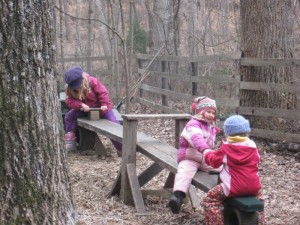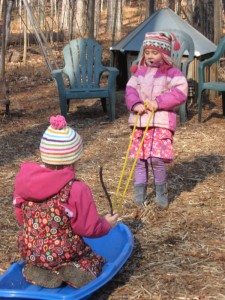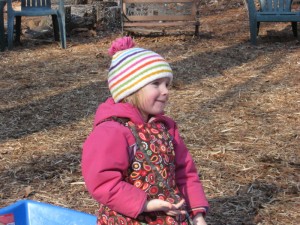In agricultural societies, winter is the time to think-through and plan for the future. Decisions regarding which crops to continue, which fields to allow to remain fallow, and new seeds to experiment with are at the forefront of farmer’s minds. Today, as I watch the snowfall just outside my window, I also am thinking of seeds for the future. I am pleased to invite you to join me and others who contemplate our best future, to the March 4 -6, 2011 conference Re-Thinking Childhood: Parenting and Educating Children in a Time of Global Transformation hosted by Great Lakes Teacher Training, Milwaukee, WI.
Joan Almon, Executive Director of The Alliance for Childhood and I will keynote the conference. We will work with a host of workshop presenters who will offer topics for educators, parents, community leaders and all forward thinking people. This is from the brochure:
“Our world has been changing rapidly. We see transformation on a global scale in the fields of technology and science, in our natural environment and farms, in the economy and politics. It’s hard to even imagine the future our children will be entering into as adults. How can we best prepare them for the unknown? What experiences do they need to grow into adults who know themselves and have a sense of purpose? Can we imagine forms of education and childcare that support the development of meaningful relationships as a foundation for new and better ways of life”
Please follow this link, to visit and consider joining us for this important conference. Together we envision the future! www.waldorftraining.com/marchconf120610.htm
On a final note, here is a thought from one of my up-coming presentations:
Those of us who are committed to the future ask ourselves a critically important question: “What is the best thing I can do, for the children?” But I would propose that we consider another equally critical question: “Who is the best person I can be, for the children?” How can I become my very best self? Who we are is the subtext our children read while we live each day with them, as we go about our “doing.”
It is our consciousness, knowing who we are, that shapes our children and the future as well. Raising and educating our children to know themselves prepares them best for whatever the future may hold. For it is in knowing ourselves, that we hold the compass which guides our actions. When we know who we are, we will know what to do.




